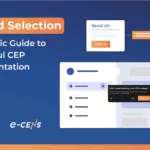Section I: What is Personalized Customer Experience and Why is it Essential?
Consider this: Industry benchmarks suggest businesses excelling at personalization generate significantly higher revenue growth than their peers who lag behind.
Conversely, delivering irrelevant or disjointed customer experiences actively drives customers away – often permanently. In today’s market, failing to effectively personalize isn’t just a missed opportunity; it’s a critical business risk that directly impacts customer satisfaction and customer loyalty.
Defining Personalized Customer Experience Beyond the Buzzword
So, what does personalized customer experience mean in a truly strategic sense? It’s the deliberate, data-informed practice of tailoring every interaction, communication, and offering—whether a product or service—to the specific context, needs, and preferences of each individual customer.
This requires moving beyond superficial segmentation to deliver relevance at scale across all touchpoints. The truly personalized customer experience refers to making every customer feel uniquely recognized and valued.
The Mandate: Meeting Evolved Customer Expectations
This level of personalization is no longer optional; it’s the baseline expectation. Customers want relevance, and they have little patience for brands that don’t understand them.
Meeting this expectation is fundamental to building the trust required for customers to willingly share the customer data needed to personalize effectively. As we’ve discussed previously regarding privacy and consent [Spotify | Apple], this trust is paramount.
The Strategic Value: Beyond Satisfaction to Measurable Growth
When businesses successfully implement strategies to deliver personalized experiences, the impact extends far beyond positive sentiment. It translates into measurable business outcomes:
- Enhanced Customer Loyalty: Building a durable, loyal customer base resistant to competitive pressures.
- Increased Customer Lifetime Value (LTV): Driving repeat purchases and higher average order values.
- Improved Conversion Rates: Presenting the right offer or content at the right moment.
- Competitive Differentiation: Standing out in crowded markets by offering superior relevance.
Ultimately, the benefits of customer experience personalization are directly tied to sustainable growth. Delivering a consistently better customer experience through intelligent personalization isn’t just good service; it’s a core strategic imperative.
Section II: Building the Capability for Successful Personalization

Simply acknowledging the need for personalized customer experiences isn’t enough; organizations must build the operational capabilities to deliver them effectively and at scale. This involves strategically addressing data unification, channel orchestration, and technology enablement. Successful personalization requires deliberate architecture, not just good intentions.
Foundation: Unifying Customer Data for Actionable Insights
The cornerstone of any effective effort to personalize is unified, trustworthy customer data. Forget isolated spreadsheets or departmental databases; you must leverage customer data by consolidating it strategically.
The goal is to build rich, dynamic customer profiles that capture interactions and preferences across all relevant touchpoints.
This isn’t just data collection; it’s about architecting for insight. Implementing robust data governance and ethical frameworks, grounded in clear consent management, is non-negotiable for building the trust needed to acquire this data.
The outcome should be detailed customer profiles, often housed within Customer Data Platforms (CDPs), that provide a single source of truth for understanding customer needs and customer behavior. Without this unified view, attempts to create personalized experiences will remain fragmented and often inaccurate.
Strategy: Orchestrating Personalization Across Channels
Effective personalization cannot operate in silos.
A customer’s experience across channels—from website interactions and mobile app usage to email engagement and customer support contacts—must feel consistent and coherent.
This requires breaking down internal organizational barriers and implementing personalization strategies that orchestrate interactions seamlessly.
Achieving this demands integrated systems. Think beyond individual channel tools and focus on the underlying architecture needed to share real-time profile updates and context.
Whether it’s a CDP feeding insights to your web personalization tools, email platform, and support systems, or other integration patterns, the strategic imperative is to ensure the efforts to personalize in one channel are informed by, and consistent with, interactions in others.
This requires a holistic view of customer experience management and integrated personalization tools.
Enablement: Leveraging Technology for Scale and Precision
Manual segmentation and delivery simply cannot achieve meaningful personalization at scale. This is where technology becomes a critical enabler, but tool selection must be strategic.
Invest in platforms designed to solve specific challenges within your personalization strategy.
Customer Data Platforms (CDPs) are often central, providing the necessary unification and segmentation capabilities mentioned earlier.
Customer Experience Management Platforms or dedicated personalization engines automate the delivery of personalized content, offers, and experiences based on defined rules and customer segments.
Advanced personalization tools, potentially incorporating machine learning, can further refine targeting and recommendations. Tools like Amplitude can provide crucial feedback loops, offering deep insights into how users respond to various personalization efforts, enabling data-driven optimization.
As we discussed when exploring effective tech stacks [Spotify | Apple], choosing integrated tools that support your specific personalization strategies is key to moving beyond foundational setup to impactful execution. Implement personalization capabilities thoughtfully, ensuring they align with your data infrastructure and team skills.
Section III: Strategic Personalization Across the Customer Journey
Generic approaches fail customers at key moments. Effective personalization requires strategically tailoring interactions at critical stages throughout the entire customer journey. This means moving beyond broad segments to deliver relevance when and where it matters most.
Action 1: Map and Optimize the Customer Journey for Personalization
Before you can effectively personalize the customer journey, you must understand it deeply. Develop a detailed customer journey map that identifies key phases, decision points, potential friction areas, and crucial touchpoints across all channels. Don’t treat this as a one-off exercise; continuously refine the map based on actual customer behavior data.
Analyzing these journeys allows you to pinpoint the specific stages where personalization will yield the highest impact.
Is it during initial onboarding? At the point of potential churn? During post-purchase follow-up?
Focusing efforts on these high-leverage moments within the entire customer experience ensures resources are applied strategically.
Identifying how different customer segments navigate the stage of the customer journey is key to tailoring interventions.
Action 2: Implement Data-Driven, Highly Personalized Recommendations
Product and content recommendations are a cornerstone of effective personalization, but generic suggestions fall flat.
Leverage unified customer data—combining purchase history, real-time browsing customer behavior, stated preferences, and potentially contextual data—to generate highly personalized product recommendations or content suggestions.
Utilize robust personalization tools, often incorporating machine learning, to power these recommendations dynamically.
The goal isn’t just to show related items, but to make personalized recommendations that genuinely anticipate the individual customer’s needs or interests, enhancing their shopping experience or content discovery.
Tools like Amplitude can be invaluable here, not just for serving recommendations (if integrated), but crucially for measuring which recommendation algorithms and placements actually influence downstream customer behavior and drive customer satisfaction.
This creates a necessary feedback loop for optimizing your recommendation strategy.
Action 3: Deliver Context-Aware, Personalized Customer Support
Customer support interactions are critical touchpoints that significantly impact customer loyalty. Generic, uninformed support experiences are frustrating and damaging.
Strive to deliver personalized customer support by equipping your agents with the right context and tools, enabling personalized customer service.
Integrate your support systems (like helpdesks or chat tools) with your core customer data sources (like CDPs or CRMs).
This ensures your customer support agent has immediate access to all customer context – past purchases, previous support interactions, recent website activity – allowing them to understand the issue faster and provide relevant solutions.
This approach helps provide personalized customer service that makes every customer feel heard and valued, turning potential problems into loyalty-building moments. The aim is to make the customer interaction efficient, empathetic, and truly helpful.
Section IV: Measuring Personalization Effectiveness and ROI
Implementing initiatives to personalize the customer experience requires significant investment in data, technology, and process.
Therefore, rigorously measuring the effectiveness and calculating the ROI of personalization isn’t just good practice; it’s essential for justifying continued investment and driving intelligent refinement of your personalization efforts.
Action 1: Track Key Performance Indicators (KPIs) Tied to Personalization
Identify specific, measurable metrics that directly reflect the impact of your personalization activities. Don’t rely on vanity metrics. Focus on KPIs such as:
- Conversion Rate Uplift: Compare conversion rates for users exposed to personalized offers or experiences versus control groups.
- Engagement Metrics: Track interaction rates (e.g., click-through rates, time on site/app) for personalized content versus generic versions.
- Revenue Metrics: Measure changes in Average Order Value (AOV), purchase frequency, and ultimately, customer lifetime value for targeted customer segments.
- Retention & Churn: Monitor cohort retention rates and churn reduction among segments receiving focused personalized experiences.
Higher overall customer satisfaction scores (CSAT, NPS) are also valuable indicators, though direct attribution can be more complex. Consistent tracking of these metrics provides quantitative evidence of personalization effectiveness.
Action 2: Leverage Customer Feedback for Qualitative Insight
Quantitative metrics show what is happening, but qualitative customer feedback often reveals why. Actively solicit and analyze customer reviews, survey responses (especially post-interaction surveys related to personalized customer service), and direct comments to understand the perceived relevance and quality of your efforts to personalize.
Is the personalization helpful, or does it feel intrusive? Are recommendations relevant? This customer feedback loop is critical for identifying areas needing improvement and ensuring your strategy resonates positively with users. Don’t underestimate the insights hidden in open-ended comments.
Action 3: Calculate the ROI of Personalization Initiatives Rigorously
Demonstrating financial value requires a clear-eyed calculation of ROI. This involves attributing incremental gains in revenue, efficiency, or cost savings directly to specific personalization efforts.
Isolate the impact of personalization through A/B testing or statistical modeling where possible. Compare the documented financial benefits (e.g., increased revenue from personalized campaigns, reduced churn costs) against the total costs incurred (including personalization tools, development time, data management, and operational resources).
As we’ve discussed regarding ROI for digital transformation [Spotify | Apple], defining the timeframe and methodology clearly is crucial for credibility. Proving positive ROI is essential for securing ongoing resources for your personalization strategy.
By combining rigorous KPI tracking, qualitative customer feedback analysis, and disciplined ROI calculation, organizations can effectively measure the success of their personalization efforts and continuously refine their approach for maximum business impact.
Section V: Navigating the Strategic Challenges of Personalization
While the strategic imperative to personalize the customer experience is clear, implementation presents significant operational and ethical challenges.
Recognizing and proactively addressing these hurdles is essential for achieving successful personalization without incurring undue risk or alienating customers.
Challenge 1: Balancing Personalization with Customer Privacy
This remains the most critical tightrope to walk. Aggressively leveraging customer data to personalize interactions risks violating customer privacy expectations and regulatory mandates (GDPR, CCPA, etc.).
The consequence isn’t just potential fines; it’s the erosion of customer trust, which is incredibly difficult to regain.
- Strategic Mitigation: Adopt a “privacy-first” approach. Implement robust consent management practices (as discussed previously [Spotify | Apple]), ensure data governance policies are clear and enforced, and be transparent with customers about what data is collected and how it’s used to personalize their experience.
Prioritize using data minimally required to deliver value, and always provide clear opt-out mechanisms. This balance is a key responsibility for customer experience leaders.
Challenge 2: Achieving Meaningful Personalization at Scale
Delivering truly personalized experiences to a large, growing customer base is operationally complex. Manual segmentation and content tailoring quickly become unmanageable, leading to generic experiences that defeat the purpose. Scaling requires sophisticated technology and processes.
- Strategic Mitigation: Invest strategically in personalization tools and customer data platforms (CDPs) designed for personalization at scale.
Focus on automation capabilities for segmentation, content/offer delivery, and journey orchestration.
Crucially, ensure your underlying data infrastructure is architected to support real-time data processing and activation needed to personalize effectively for thousands or millions of users simultaneously. Don’t underestimate the data engineering required.
Challenge 3: Avoiding Common Personalization Pitfalls and Ensuring Quality
Poorly executed personalization can be worse than none at all. Common pitfalls include delivering irrelevant or inaccurate personalized recommendations due to flawed algorithms or poor customer data quality, creating a disjointed user experience because efforts to personalize across channels are inconsistent, or simply annoying customers with excessive or creepy targeting.
- Strategic Mitigation: Implement rigorous quality assurance processes for all personalization efforts.
This includes validating data inputs, continuously monitoring algorithm performance, A/B testing different approaches, and establishing clear rules to prevent over-messaging or irrelevant targeting.
Foster strong customer experience management practices that include regular audits and incorporate customer feedback to quickly identify and correct negative experiences stemming from flawed personalization.
Navigating these challenges requires a commitment to ethical data handling, robust technological infrastructure, continuous quality monitoring, and a customer-centric mindset throughout the organization.
Section VI: Delivering Truly Personalized Experiences Across All Touchpoints
Achieving sporadic moments of personalization isn’t enough.
The strategic goal is to provide truly personalized customer service and experiences consistently, making them feel seamless and relevant regardless of which channel or touchpoint the customer uses to engage with your brand.
This requires a deliberate strategy to break down internal silos and orchestrate how you personalize across the entire customer experience.
Strategy 1: Ensure Cross-Channel Consistency
A fundamental requirement is creating consistent personalized experiences across channels.
A customer’s interaction history on your website or mobile app should directly inform the communications they receive via email or the context available to customer support. Conflicting messages or irrelevant offers stemming from channel silos rapidly undermine trust and the perception of genuine personalization.
- Enablement: This necessitates integrated systems, particularly Customer Data Platforms (CDPs), that centralize customer profiles and interaction history, making a unified view accessible to all relevant customer experience management tools and teams. Real-time data sharing is key.
Strategy 2: Bridge Digital and Physical/Human Interactions
For businesses with multiple interaction types, actively work to personalize digital and in-person customer interactions by sharing context.
Insights gleaned from online customer behavior should empower frontline staff or customer support agents to provide more relevant and efficient assistance, enabling personalized customer service that acknowledges the customer’s unique situation.
- Enablement: Equip support and sales teams with tools that surface relevant customer history and preferences during every customer interaction. The goal is to make the customer feel recognized consistently.
Strategy 3: Leverage Communications Intelligently
Personalized emails and other direct communications are powerful tools when used strategically.
Move beyond generic newsletters and segment blasts. Personalize content, offers, timing, and frequency based on inferred needs, past customer behavior, stated preferences, and the specific stage of the customer journey.
- Enablement: Utilize marketing automation and customer engagement platforms that allow for sophisticated segmentation and dynamic content insertion based on unified customer profiles. Focus on delivering value with each communication to improve the customer relationship.
Achieving this level of truly personalized customer experience consistently is challenging but essential. It relies heavily on using real-time customer data effectively and having an architecture that can enable a personalized experience at scale.
By focusing on unified data, cross-channel orchestration, and intelligent communication, businesses can make personalized interactions the norm, fostering deeper loyalty and driving sustainable growth.
This commitment to understanding and valuing the individual customer across the entire customer experience is a hallmark of digital maturity.
Need Help Architecting Your Personalization Strategy?
Successfully designing, implementing, and scaling personalized customer experiences requires a blend of strategic insight, technical expertise, and operational rigor. Choosing the right technology stack, unifying customer data effectively, measuring impact accurately, and navigating privacy complexities are critical steps.
As experts in data-driven transformation and customer engagement, e-CENS helps organizations architect and execute personalization strategies that deliver measurable business value. We partner with leading platforms and provide strategic guidance tailored to your unique operational realities and growth objectives.
Get in touch with us today to discuss how we can help you elevate your customer experience through impactful, sustainable personalization.





